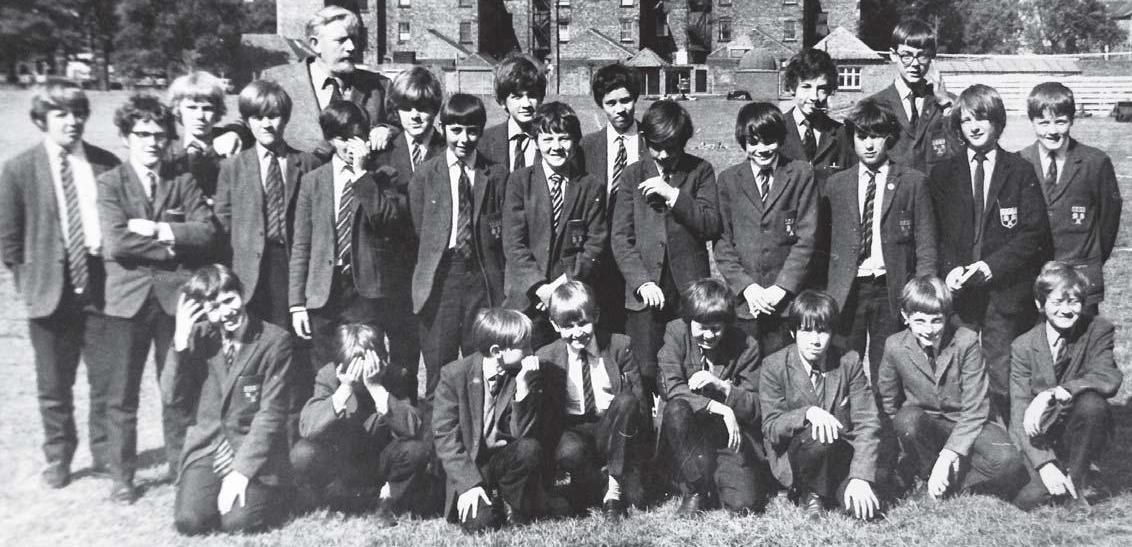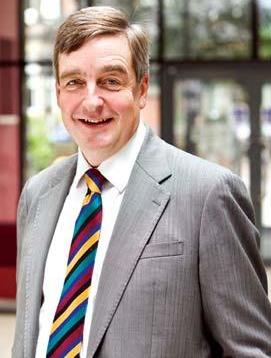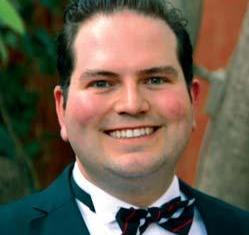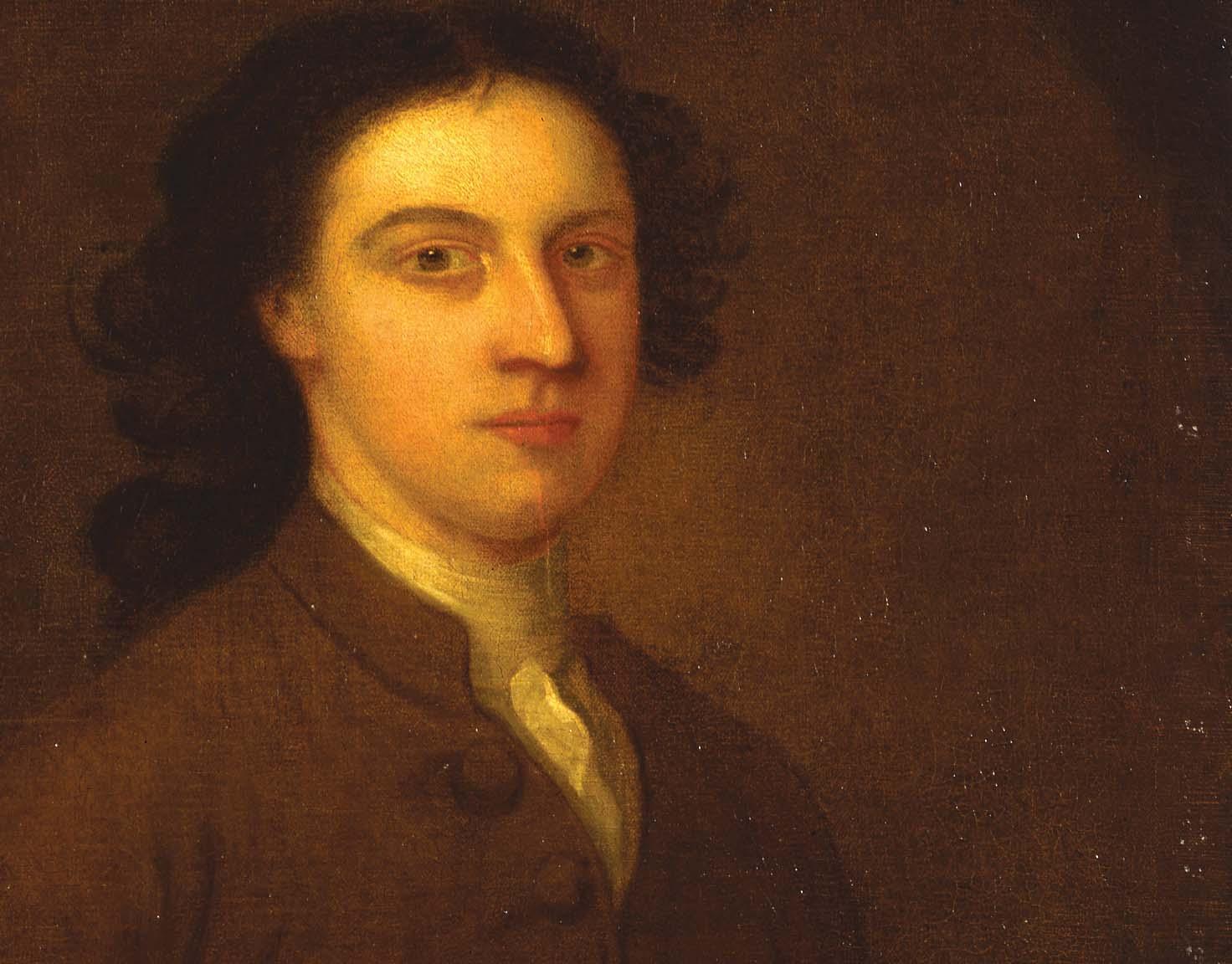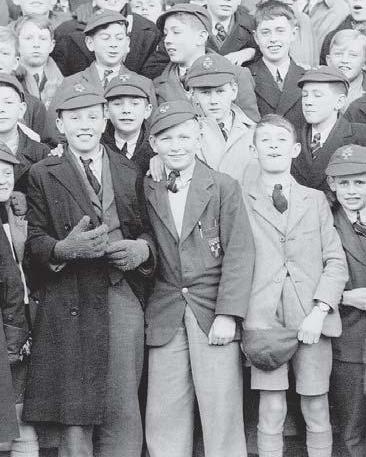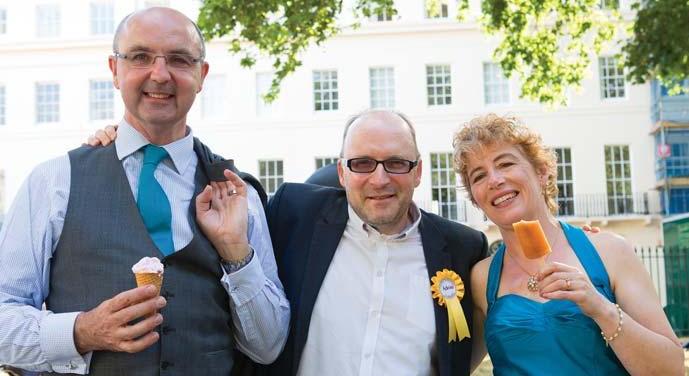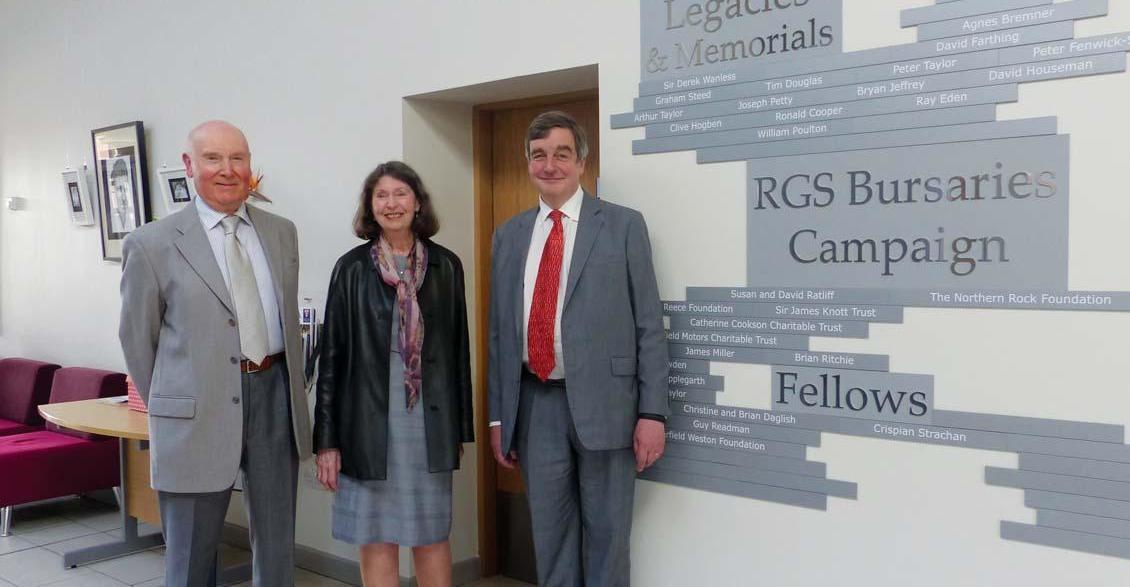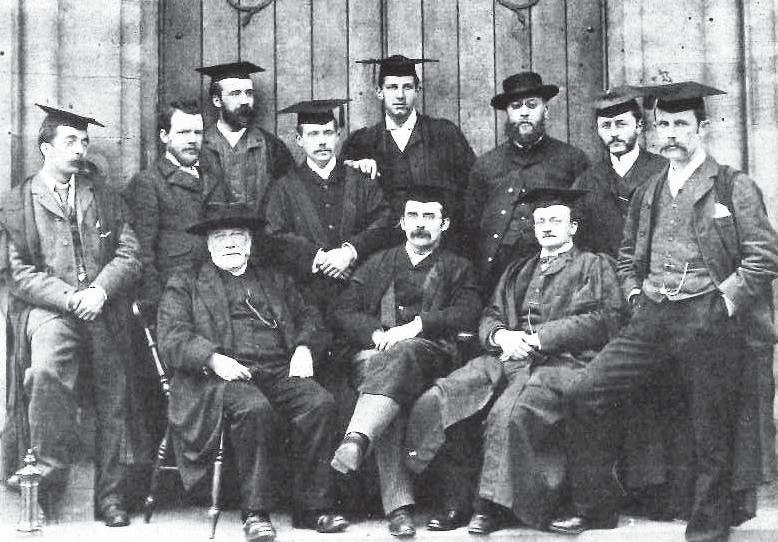
6 minute read
A History of the RGS in Its People
from ONA 97
A HISTORY OFTHE RGS IN ITS PEOPLE
by David Goldwater (51-62)
Advertisement
The RGS welcomes a large number of visitors throughout the year, but just once in a while, something quite extraordinary takes place. In midMarch, Jane Medcalf, our development manager, had the pleasure of a visit from the great-grandson of Samuel Charles Logan (1883-1912), the Headmaster who not only founded the NOVO magazine (1885), but also presided over the school’s move from Rye Hill to Jesmond in September 1906.
Headmaster, Samuel Charles Logan (seated front row middle) with his assistants at Rye Hill (date unknown) Headmaster, Samuel Charles Logan (middle, back row) with RGS cricket team, 1907
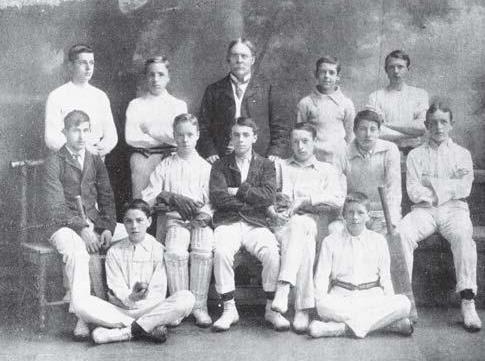
It took over 100 years for the Logans to revisit the site their ancestor had helped to establish, when in mid-March, Richard ‘Rich’ J Logan, living in Gloversville, NY, USA, called in to school with his wife Jane and son Dustin (Samuel’s great-great grandson). Jane was not expecting them, but as all visitors, they were given a warm welcome. The Logans were thrilled to see how the school has flourished on its Jesmond site and have now returned home, after touring the UK, to pass on their enthusiasm to the rest of the family.
The school’s fortunes had reached a low ebb by the time Samuel Logan, aged 38, succeeded Brian Christopherson (1873-83). A Cambridge man, he was educated at The Perse School and St John’s College. He resigned as Headmaster of Hull Grammar School after only a few years, as the council had thwarted the school’s plans for expansion, perhaps an indication of his strength of character. When he was appointed, numbers at the RGS were small and boys rarely stayed for more than a few years. Staff turnover had been high with a resultant lack of facilities all through, from science to physical activity. Vested interests and lack of finance initially were to stand in the way of some ambitious expansion schemes for the Rye Hill and Fenham areas. Sports fixtures were restricted by the lack of pitches. Indeed, the building of the Fleming Memorial Hospital resulted in the loss of the school’s then rented ground.
One of the early innovations was the launch of The Novocastrian or NOVO in 1885. The editors proclaimed that, ‘Through this medium, we propose to create and maintain an esprit de corps amongst the past and present members of the school.’ (At that time, former pupils lacked the benefit of their own publication!) Despite the lack of facilities, sporting activities such as paper chases and cycling seem to have been encouraged, but it would be another two decades before more familiar sporting activities were to be adopted.
Latin was added to bookkeeping and shorthand and, despite limited space and equipment, physics and chemistry expanded. Space is always a problem in a school and determined to expand and develop, early in his career, Logan energetically identified the areas which urgently
required attention. The governors sought support from the Charity Commissioners (Bursary committee please note!), who gave some reluctant support and a new gym was opened on the site in 1891. The waning 19th Century had seen the rise of science, engineering and technology, particularly on Tyneside. By good fortune and the timely passing of legislation promoting secondary education, some proceeds of a lucrative tax on wine and spirits were diverted to the school, encouraged by William, Lord Armstrong. What was popularly referred to as the ‘Publicans’ or ‘Whisky’ Money provided an urgent solution to the school’s longstanding impoverishment, as the councils of Newcastle, Northumberland and Durham were all able to provide funds for the education of local boys.
Logan’s stubborn persistence was to pay off as he identified the many restrictions of the Rye Hill location. Numbers were, at last, growing and by 1895 the governors were considering a move, ‘to the best site in the City’. Negotiations with the City Council to acquire land in Eskdale Terrace, Jesmond, began in 1896, whilst a ‘Branch’ school was opened at No. 5 St. Thomas’ Place, near Leazes (subsequently at No.1 Jesmond High Terrace until 1906), in 1897, the house actually bought by Logan himself. There was some opposition from locals on account of disturbance, even including from some governors!
However, there was general acceptance that the school was in the wrong place and, as the ‘Branch’ school became completely full, the strain of running the school on two sites must have been immense. Added to this complexity were the complex negotiations with numerous bodies over the sale of the Rye Hill buildings and the purchase of the new site.
Eventually the foundation stone was laid on 28 September 1905. The transformation was an enormous contrast from the dimness and cramped conditions at Rye Hill, and the RGS blossomed into something more familiar to ONs and today’s students. Samuel Logan was able to preside over winning ways in sport, form classrooms and new school societies, including Drama, Photography and a Debating Society. He even allowed his daughter Elsie to play Portia in one of the school’s first productions, The Merchant of Venice. Swimming was promoted, with the Novo Shield trophy, funded by the editors of NOVO, awarded each year to the best athlete (still on show in the Main Hall). 1911 saw the formation of a Junior Training Corps.
The school’s dependence on complex funding with its trying political ramifications must have weighed heavily on Logan and the school governors, very many of whom had moved on during his 29-year career, and eventually he resigned in early 1912. The tributes were generous, as was his pension. He wrote, ‘How deeply the departure from School affects me, I cannot find words to express.’ He retired to Bournemouth, where he died in January 1936 at the age of 84.
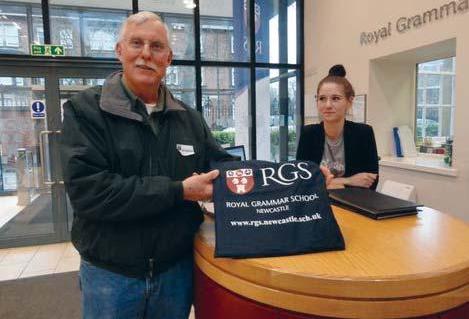
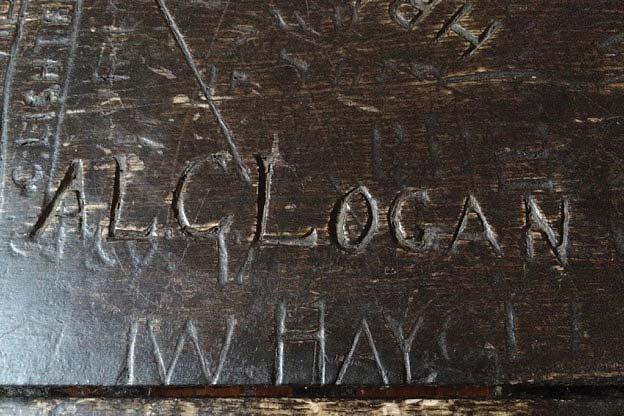
Top: Rich Logan receives a warm welcome, with Stephanie Taylor, receptionist Bottom: Albert’s carving of his initials on the old school table in the Main Hall, 1890s
So what became of the Logan family? Samuel’s sons, Reginald(1885-97), Stanley (1891-1900) and Albert (1891-1900) (Richard Logan’s great-grandfather) all attended the school. The 1891 Census, held just after Easter, puzzlingly shows them living with their mother Clara in a boarding house in Colwyn Bay, possibly on holiday, whilst the Newcastle entry has Samuel, his sister, niece and a boarder from Gibraltar, a cook and two maids. In 1901, they are all at home in Maple Street, next to the school –Reginald, a mining student; Stanley, an apprentice photographer and Albert, a bank clerk. By 1911, Samuel and Clara have moved to 6 Brandling Park, near the new school, with only the daughter Elsie still at home, together with a cook and housemaid.
Reginald became a mining engineer and inspector of mines. Stanley and Albert both crossed the Atlantic, heading for Canada, where they farmed and raised their families. It’s a long and interesting story and too comprehensive for this issue of the ONA Magazine.
We have kept up contact with Rich Logan, to whom we are grateful for some of these pictures and we are trying to help him find any remaining family there may be in the UK.
The first edition of The Novocastrian, with its eight pages, dated November 1885, is available on the ONA website at http://bit.ly/223OX7M

